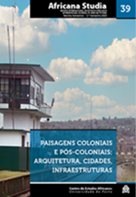Retracing continuity and discontinuity of a vernacular typology mass housing in the colonial context of Morocco: the case of the city of Casablanca
Resumo
This contribution aims to explore the courtyard house typology experimented in Morocco during the colonial period. In order to answer the needs of mass housing in the city of Casablanca, the colonial administration launched large-scale public housing
programs. Foreign architects were then seeking responses adapted to local context, adopting courtyard house typology depicted on traditional Muslim dwelling in order to achieve both individual and collective mass housing programs. From the Cité Habous realized in 1918, to the grid 8x8 of and the Nid d’abeilles in 1948, these experiences generated new architectural and urban modern typologies. Through an architectural and historical analysis, this article retraces continuities and discontinuities of courtyard house typology from colonial to postcolonial context and investigates how its reinterpretation had evolved differently beyond its own contexts, feeding new theoretical and practical answers.
Keywords: Courtyard house, typology, mass housing, Casablanca.
Downloads
Downloads
Publicado
Como Citar
Edição
Secção
Licença
Direitos de Autor (c) 2024 Africana Studia

Este trabalho encontra-se publicado com a Creative Commons Atribuição-NãoComercial 4.0.
Os autores cedem à Revista Africana Studia o direito exclusivo de publicação dos seus textos, sob qualquer meio, incluindo a sua reprodução e venda em suporte papel ou digital, bem como a sua disponibilização em regime de livre acesso em bases de dados.
As imagens, no caso de serem originais e enviadas por via postal, serão devolvidas se assim for explicitado pelos autores.
A Africana Studia é uma revista de acesso aberto que visa promover a divulgação e o debate da investigação científica. Todos os artigos aceitos são, portanto, publicados gratuitamente para autores e editores.




